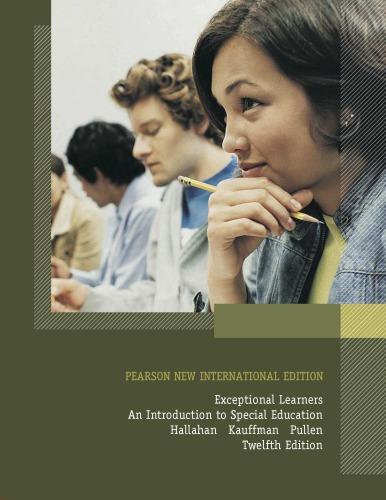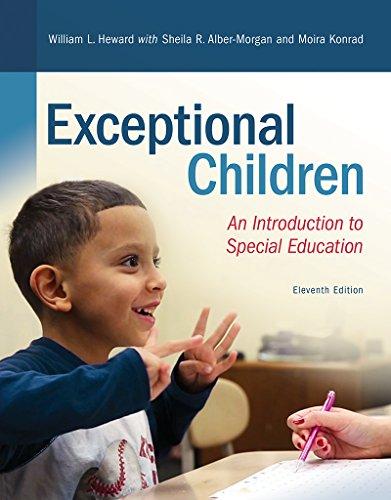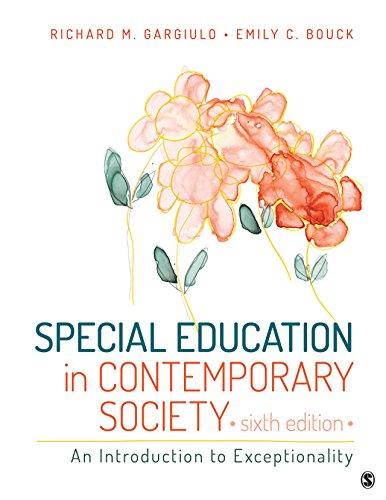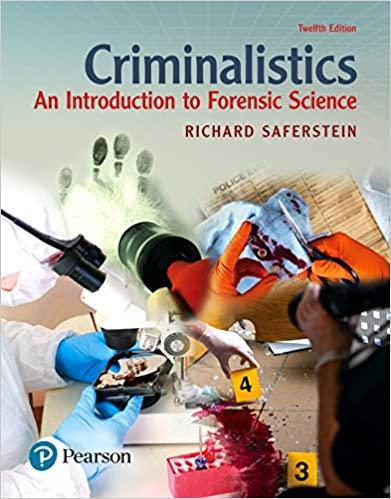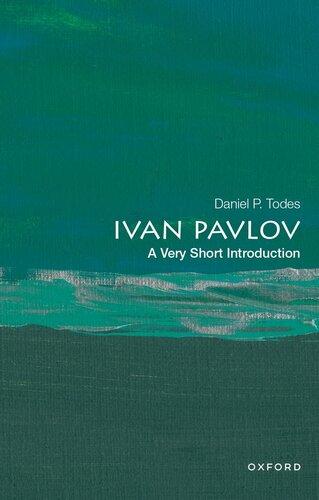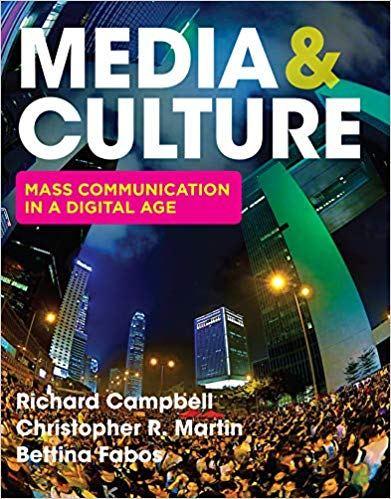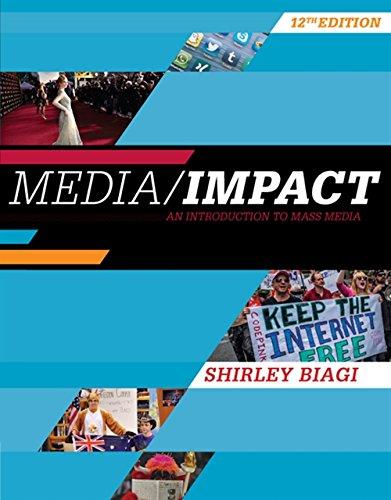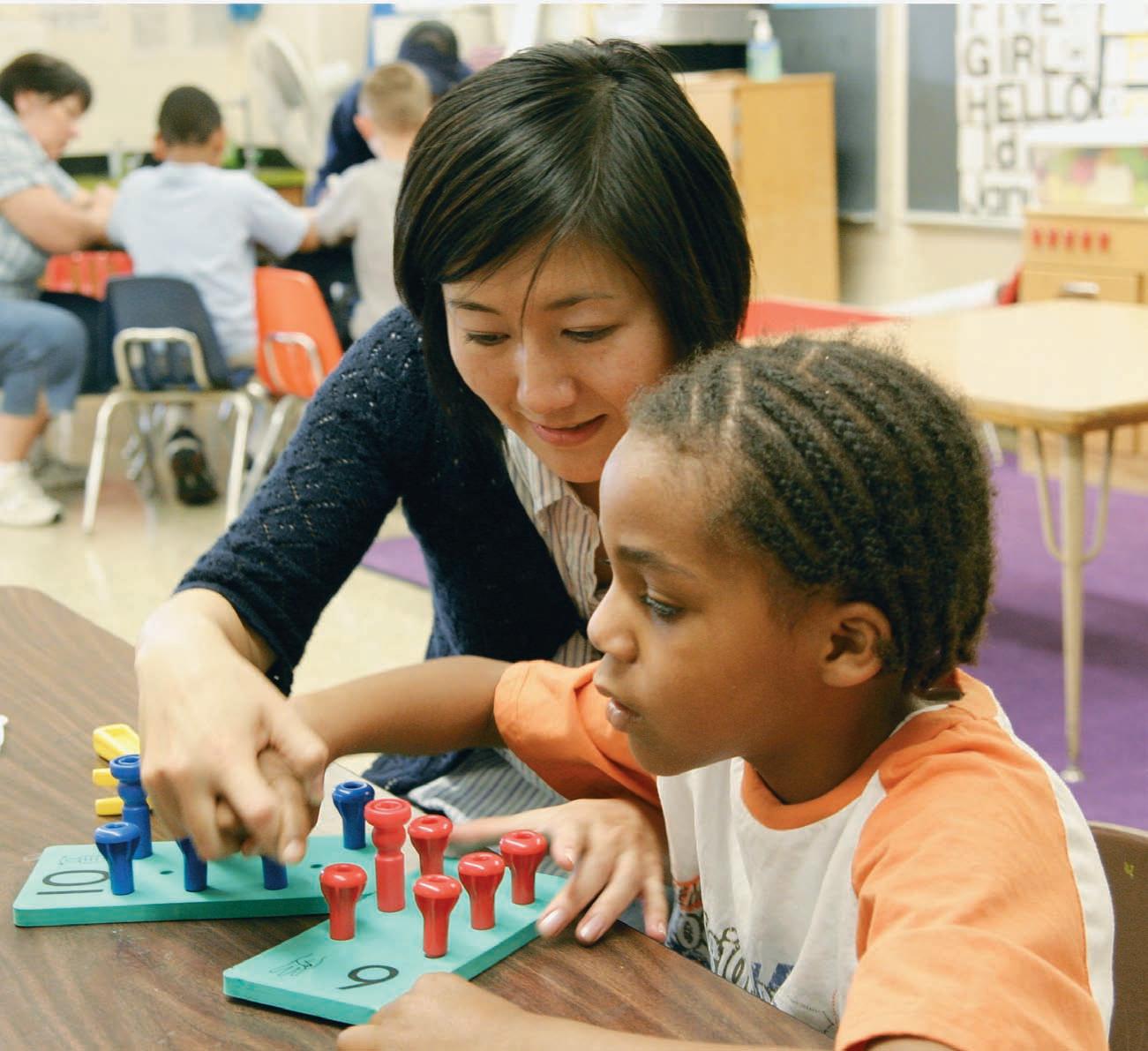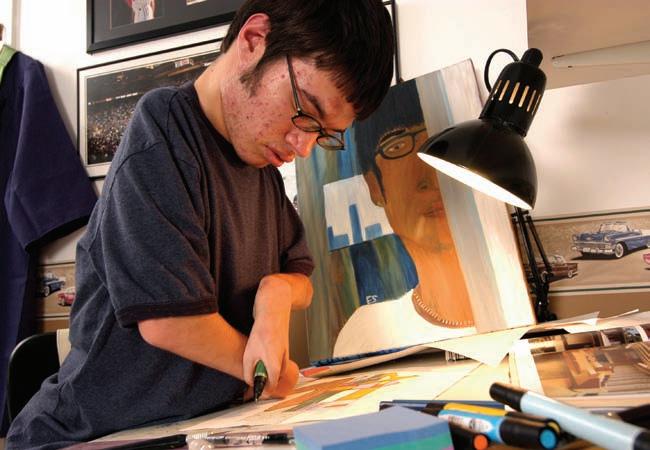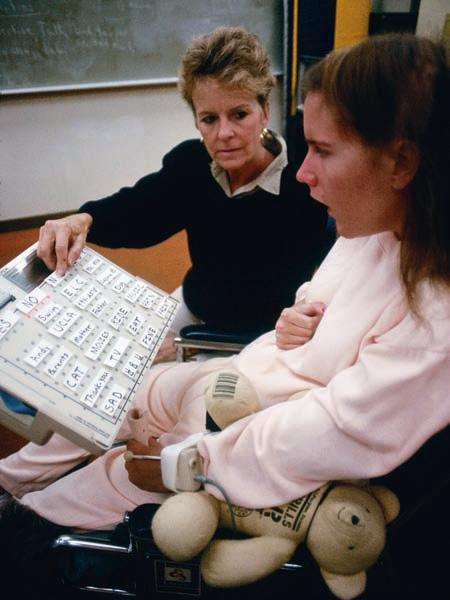GLOSSARY
A
Acceleration An approach in which students with special gifts or talents are placed in grade levels ahead of their age peers in one or more academic subjects.
Accessible pedestrian signal (APSs) Devices for people who are blind to let them know when the “walk” signal is on at intersections; can be auditory, tactile, or both.
Accommodations Changes in the delivery of instruction, type of student performance, or method of assessment which do not significantly change the content or conceptual difficulty of the curriculum.
Acquired apraxia As in Developmental apraxia, there are problems in motor planning such that the child has difficulty in producing speech sounds and organizing words and word sounds for effective communication. However, the problem is known to be caused by neurological damage.
Acquired immune deficiency syndrome (AIDs) A viruscaused illness resulting in a breakdown of the immune system; currently, no known cure exists.
Acute A serious state of illness or injury from which someone often recovers with treatment.
Adaptations Changes in curricular content or conceptual difficulty or changes in instructional objectives and methods.
Adapted signs Signs adapted for use by people who are deafblind; tactually based rather than visually based, such as American Sign Language for those who are deaf but sighted.
Adaptive behavior The social and practical intelligence used in people’s everyday lives; along with IQ, is considered in making a determination of intellectual disability.
Adaptive behavior skills Skills needed to adapt to one’s living environment (e.g., communication, self-care, home living, social skills, community use, self-direction, health and safety, functional academics, leisure, and work); usually estimated by an adaptive behavior survey; one of two major components (the other is intellectual functioning) of the AAMR definition.
Adaptive devices Special tools that are adaptations of common items to make accomplishing self-care, work, or recreation activities easier for people with physical disabilities.
Adderall A psychostimulant for ADHD; its effects are longer acting than those of Ritalin.
Adventitiously deaf Deafness that occurs through illness or accident in an individual who was born with normal hearing.
Affective disorder A disorder of mood or emotional tone characterized by depression or elation.
Aggression Behavior that intentionally causes others harm or that elicits escape or avoidance responses from others.
Aim Line Used in CBM; based on expected growth norms, a line drawn from the baseline data point to the anticipated end of instruction.
Americans with Disabilities Act (ADA) Civil rights legislation for persons with disabilities ensuring nondiscrimination in a broad range of activities.
Amniocentesis A medical procedure that allows examination of the amniotic fluid around the fetus; sometimes recommended to determine the presence of abnormality.
Androgen A hormone that is responsible for controlling the development of male characteristics.
Anoxia Deprivation of oxygen; can cause brain injury.
Anxiety disorder A disorder characterized by anxiety, fearfulness, and avoidance of ordinary activities because of anxiety or fear.
Aphonia Loss of voice.
Applied behavior analysis (ABA) Highly structured approach that focuses on teaching functional skills and continuous assessment of progress; grounded in behavioral learning theory.
Apraxia The inability to plan and coordinate speech.
Aqueous humor A watery substance between the cornea and lens of the eye.
Asperger syndrome One of five autistic spectrum disorders; a milder form of autism without significant impairments in language and cognition; characterized by primary problems in social interaction.
Assistance card A relatively small card containing a message that alerts the public that the user is deaf-blind and needs assistance in crossing the street.
Asthma A lung disease characterized by episodic difficulty in breathing, particularly exhaling, due to inflammation obstruction of the air passages.
Astigmatism Blurred vision caused by an irregular cornea orlens.
Atonic Lack of muscle tone; floppiness.
Atresia Absence or closure of a part of the body that is normally open.
Attention deficit hyperactivity disorder (ADHD) A condition characterized by severe problems of inattention, hyperactivity, and/or impulsivity; often found in people with learning disabilities.
Audiologist An individual trained in audiology, the science dealing with hearing impairments, their detection, and remediation.
Audiometric zero The lowest level at which people with normal hearing can hear.
Auditory-oral approach A method of teaching communication to people who are deaf that stresses the use of visual cues, such as speechreading and cued speech.
Auditory-verbal approach Part of the oral approach to teaching students who are hearing impaired; stresses teaching the person to use his or her remaining hearing as much as possible; heavy emphasis on use of amplification; heavy emphasis on teaching speech.
Augmentative or alternative communication (AAC) Alternative forms of communication that do not use the oral sounds of speech or that augment the use of speech.
Glossary of Exceptional Learners: An Introduction to Special Education, 12/e. Daniel P. Hallahan. James M. Kauffman. Paige C. Pullen. Copyright © 2012 by Pearson Education. All rights reserved.
Auricle The visible part of the ear, composed of cartilage; collects the sounds and funnels them via the external auditory canal to the eardrum.
Autism One of five autistic spectrum disorders; characterized by extreme social withdrawal and impairment in communication; other common characteristics are stereotyped movements, resistance to environmental change or change in daily routines, and unusual responses to sensory experiences; usually evident before age of 3 years; a pervasive developmental disability characterized by extreme withdrawal, cognitive deficits, language disorders, self-stimulation, and onset before the age of 30 months.
Autism or autistic spectrum disorder A pervasive developmental disability characterized by extreme withdrawal, cognitive deficits, language disorders, self-stimulation, and onset before the age of 30 months.
Autism spectrum disorders Five similar conditions: autism, Asperger syndrome, Rett syndrome, childhood disintegrative disorder, and pervasive developmental disorder not otherwise specified; all involve varying degrees of problems with communication skills, social interactions, and repetitive and stereotyped patterns of behavior.
Autistic regression Phenomenon whereby a child appears to progress normally until about 16 to 24 months of age and, then, begins to show signs of being autistic and ultimately is diagnosed as autistic.
Autistic savant A person with severe autism whose social and language skills are markedly delayed but who also has advanced skills in a particular area, such as calculation or drawing.
B
Basal ganglia A set of structures within the brain that include the caudate, globus pallidus, and putamen, the first two being abnormal in people with ADHD; generally responsible for the coordination and control of movement.
Baseline Data Point Used in CBM; the beginning score gathered before an intervention begins, e.g, the number of correct words per minute that a student reads before receiving a fluency intervention.
Behavior management Strategies and techniques used to increase desirable behavior and decrease undesirable behavior. May be applied in the classroom, home, or other environment. Behavior modification Systematic control of environmental events, especially of consequences, to produce specific changes in observable responses. May include reinforcement, punishment, modeling, self-instruction, desensitization, guided practice, or any other technique for strengthening or eliminating a particular response.
Behavioral inhibition The ability to stop an intended response, to stop an ongoing response, to guard an ongoing response from interruption, and to refrain from responding immediately; allows executive functions to occur; delayed or impaired in those with ADHD.
Behavioral phenotype A collection of behaviors, including cognitive, language, and social behaviors as well as psychopathological symptoms, that tend to occur together in people with a specific genetic syndrome.
Bicultural-bilingual approach An approach for teaching students with hearing impairment that stresses teaching
American Sign Language as a first language and English as a second language and promotes the teaching of Deaf culture.
Braille A system in which raised dots allow people who are blind to read with their fingertips; each quadrangular cell contains from one to six dots, the arrangement of which denotes different letters and symbols.
Braille bills Legislation passed in several states to make braille more available to students with visual impairment; specific provisions vary from state to state, but major advocates have lobbied for (1) making braille available if parents want it, and (2) ensuring that teachers of students with visual impairment are proficient in braille.
Braille notetakers Portable devices that can be used to take notes in braille, which are then converted to speech, braille, ortext.
Brain stem-evoked response audiometry Measures electrical signals from the brain stem that are in response to an auditory stimulus, such as a click.
CCataracts A condition caused by clouding of the lens of the eye; affects color vision and distance vision.
Caudate A structure in the basal ganglia of the brain; site of abnormal development in persons with ADHD.
Center-based program A program implemented primarily in a school or center, not in the student’s home.
Central coherence The inclination to bring meaning to stimuli by conceptualizing it as a whole; thought to be weak in people with ASD.
Cerebellum An organ at the base of the brain responsible for coordination and movement; site of abnormal development in persons with ADHD.
Cerebral palsy (CP) A condition characterized by paralysis, weakness, lack of coordination, and/or other motor dysfunction; caused by damage to the brain before it has matured.
CHARGE syndrome A genetic syndrome resulting in deafblindness; characterized by physical anomalies, often including coloboma (abnormalities of the pupil, retina and/or optic nerve), cranial nerves, heart defects, atresia (absence or closure) of the chonae (air passages from nose to throat), retardation in growth and mental development, genital abnormalities, ear malformation and/or hearing loss.
Choanae Air passages from the nose to the throat.
Choreoathetoid Characterized by involuntary movements and difficulty with balance; associated with choreoathetoid cerebral palsy.
Chorionic villus sampling (CVS) A method of testing the unborn fetus for a variety of chromosomal abnormalities, such as Down syndrome; a small amount of tissue from the chorion (a membrane that eventually helps form the placenta) is extracted and tested; can be done earlier than amniocentesis but the risk of miscarriage is slightly higher.
Chromosomal disorder Any of several syndromes resulting from abnormal or damaged chromosome(s); can result in intellectual disabilities.
Chromosome A rod-shaped entity in the nucleus of the cell; contains genes, which convey hereditary characteristics; each cell in the human body contains 23 pairs of chromosomes.
GLOSSARY
Chronic A long-lasting condition; not temporary.
Chronological age Refers to how old a person is; used in comparison to mental age to determine IQ. IQ (mental age chronological age) 100.
Classwide peer tutoring (CWPT) An instructional procedure in which all students in the class are involved in tutoring and being tutored by classmates on specific skills as directed by their teacher.
Cleft palate A condition in which there is a rift or split in the upper part of the oral cavity; may include the upper lip (cleft lip).
Clinical history A history both from the patient and from a close contact such as parents, spouse, or significant other.
Closed head injury Damage to the brain that occurs without penetration of the skull; might be caused by a blow to the head or violent shaking by an adult.
Coaching A technique whereby a friend or therapist offers encouragement and support for a person with ADHD.
Cochlea A snail-shaped organ that lies below the vestibular mechanism in the inner ear; its parts convert the sounds coming from the middle ear into electrical signals that are transmitted to the brain.
Cochlear implantation A surgical procedure that allows people who are deaf to hear some environmental sounds; an external coil fitted on the skin by the ear picks up sound from a microphone worn by the person and transmits it to an internal coil implanted in the bone behind the ear, which carries it to an electrode implanted in the cochlea of the innerear.
Cognition The ability to solve problems and use strategies; an area of difficulty for many persons with learning disabilities.
Cognitive mapping A nonsequential way of conceptualizing the spatial environment that allows a person who is visually impaired to know where several points in the environment are simultaneously; allows for better mobility than does a strictly sequential conceptualization of the environment.
Cognitive training A group of training procedures designed to change thoughts or thought patterns.
Collaborative consultation An approach in which a special educator and a general educator collaborate to come up with teaching strategies for a student with disabilities. The relationship between the two professionals is based on the premises of shared responsibility and equal authority.
Coloboma A condition of the eye in which the pupil is abnormally shaped and/or there are abnormalities of the retina or optic nerve; can result in loss of visual acuity and extreme sensitivity to light.
Communication The process of sharing information.
Communication disorders Impairments in the ability to use speech or language to communicate.
Communicative function Acts of communication, such as requesting, rejecting, commenting, arguing, and reasoning.
Communicative Intent The need to communicate for social reasons; thought to be lacking in most children with autism.
Community residential facility (CRF) A place, usually a group home, in an urban or residential neighborhood where about 3 to 10 adults with intellectual disabilities live under supervision.
Comorbidity Co-occurrence of two or more conditions in the same individual.
Competitive employment A workplace that provides employment that pays at least minimum wage and in which most workers are nondisabled.
Comprehension monitoring The ability to keep track of one’s own comprehension of reading material and to make adjustments to comprehend better while reading; often deficient in students with learning disabilities.
Conditioned play audiometry Using pure tones or speech, the examiner teaches the child to do various activities whenever he hears a signal.
Conduct disorder A disorder characterized by overt, aggressive, disruptive behavior or covert antisocial acts such as stealing, lying, and fire setting; may include both overt and covert acts.
Conductive hearing impairment A hearing impairment, usually mild, resulting from malfunctioning along the conductive pathway of the ear (i.e., the outer or middle ear).
Congenital A characteristic or condition that is present at birth; might or might not be due to genetic factors.
Congenital anomaly An irregularity (anomaly) that is present at birth; might or might not be due to genetic factors.
Congenital cytomegalovirus (CMV) The most frequently occurring viral infection in newborns; can result in a variety of disabilities, especially hearing impairment.
Congenitally deaf Deafness that is present at birth; can be caused by genetic factors, by injuries during fetal development, or by injuries occurring at birth.
Connexin-26 gene A gene, the mutation of which causes deafness; the leading cause of congenital deafness in children.
Constant time delay An instructional procedure whereby the teacher makes a request while simultaneously prompting the student and then over several occasions makes the same request and waits a constant period of time before prompting; often used with students with intellectual disabilites.
Content enhancement The modification of curriculum materials to make them more salient or prominent, e.g., graphic organizers and mnemonics.
Continuous performance test (CPT) A test measuring a person’s ability to sustain attention to rapidly presented stimuli; can help in the diagnosis of ADHD.
Cooperative learning A teaching approach in which the teacher places students with heterogeneous abilities (for example, some might have disabilities) together to work on assignments.
Cooperative teaching An approach in which general educators and special educators teach together in the general classroom; it helps the special educator know the context of the general education classroom better.
Cornea A transparent cover in front of the iris and pupil in the eye; responsible for most of the refraction of light rays in focusing on an object.
Corpus callosum A part of the brain, consisting of millions of fibers connecting the left and right hemispheres; responsible for communication between the two hemispheres; site of abnormal development in persons with ADHD.
Cortical visual impairment (CVI) A poorly understood childhood condition that apparently involves dysfunction in
the visual cortex; characterized by large day-to-day variations in visual ability.
Co-teaching A special educator working side-by-side with a general educator in a classroom, both teachers providing instruction to the group.
Cranial nerves Twelve pairs of nerves that connect the brain with various muscles and glands in the body.
Creativity The ability to express novel and useful ideas, to sense and elucidate new and important relationships, and to ask previously unthought of, but crucial, questions.
Cued speech A method to aid speechreading in people with hearing impairment; the speaker uses hand shapes to represent sounds.
Curriculum based measurement (CBM) A formative evaluation method designed to evaluate performance in the curriculum to which students are exposed; usually involves giving students a small sample of items from the curriculum in use in their schools; proponents argue that CBM is preferable to comparing students with national norms or using tests that do not reflect the curriculum content learned by the students.
Customized employment Based on an assessment of the individual’s strengths, weaknesses, and interests, the job matches the person’s profile of interests and skills.
Cystic fibrosis An inherited disease affecting primarily the gastrointestinal (GI) tract and respiratory organs; characterized by thick, sticky mucous that often interferes with breathing or digestion.
D
Daily living skills Skills required for living independently, such as dressing, toileting, bathing, cooking, and other typical daily activities of nondisabled adults.
Decibels Units of relative loudness of sounds; zero decibels (0dB) designates the point at which people with normal hearing can just detect sound.
Decoding The ability to convert print to spoken language; dependent on phonemic awareness and understanding of the alphabetic principles; a significant problem for many people with reading disabilities.
Deinstitutionalization A social movement starting in the 1960s whereby large numbers of persons with intellectual disabilities and/or mental illness are moved from large mental institutions into smaller community homes or into the homes of their families; recognized as a major catalyst for integrating persons with disabilities into society.
Descriptive Video Service® A service for use of people with visual impairment that provides audio narrative of key visual elements; available for several public television programs and some videos of movies.
Developmental apraxia A disorder of speech or language involving problems in motor planning such that the child has difficulty in producing speech sounds and organizing words and word sounds for effective communication. The cause may be unknown.
Developmentally appropriate practice (DAP) Educational methods for young children that are compatible with their developmental levels and that meet their individual needs; coined by the National Association for the Education of Young Children.
Diabetic retinopathy A condition resulting from interference with the blood supply to the retina; the fastest-growing cause of blindness.
Dialects A variation of a language that differs from that standard language based on phonology, vocabulary, or grammar. Dialects may be distinct to members of a particular group (e.g., ethnic group, regional group).
Direct Instruction (DI) A method of teaching academics, especially reading and math; emphasizes drill and practice and immediate feedback; lessons are precisely sequenced, fastpaced, and well-rehearsed by the teacher.
Dopamine A neurotransmitter, the levels of which may be abnormal in people with ADHD.
Doppler effect A term used to describe the phenomenon of the pitch of a sound rising as the listener movies toward its source.
Down syndrome A condition resulting from an abnormality with the 21st pair of chromosomes; the most common abnormality is a triplet rather than a pair (the condition sometimes referred to as trisomy 21); characterized by intellectual disability and such physical signs as slantedappearing eyes, hypotonia, a single palmar crease, shortness, and a tendency toward obesity.
Due process hearing A non-court proceeding held before an impartial hearing officer.
Dynamic assessments An interactive assessment process that involves ongoing analysis of student learning in response to an intervention.
Dysarthria A condition in which brain damage causes impaired control of the muscles used in articulation.
Dysfluencies Hesitations, repetitions, and other disruptions of normal speech flow.
E
Early expressive language delay (EELD) A significant lag in the development of expressive language that is apparent by age 2.
Early intensive behavioral intervention (EIBI) A program anchored in the applied behavioral analysis tradition that emphasizes the role of parents as interventionists, and requires considerable time commitments from therapists and parents in implementing very structured training on discrete skills. Some researchers have found it to be effective in improving language and functional skills in many, although not all, young children with autism.
Echolalia The parroting repetition of words or phrases either immediately after they are heard or later; often observed in individuals with autistic spectrum disorders.
Education for All Handicapped Children Act Also knownas Public Law 94-142, which became law in 1975 andisnow known as the Individuals with Disabilities Education Act (IDEA). Retitled in 1990 and reauthorized in 1997 and 2004.
Electroencephalography (EEG) A method of measuring the electrical activity of the brain.
Emotional disturbance The term used in federal special education laws and regulations for problematic behavior that interferes with education; the federal term used to indicate the problems of emotionally disturbed students.
Emotional or behavioral disorders The terminology proposed by the National Mental Health and Special Education Coalition to replace the federal terminology “emotional disturbance.”
Encephalitis An inflammation of the brain; can affect the child’s mental development adversely.
Encopresis Bowel incontinence; soiling oneself.
Enrichment An approach in which additional learning experiences are provided for students with special gifts or talents while the students remain in the grade levels appropriate for their chronological ages.
Enuresis Urinary incontinence; wetting oneself.
Epilepsy A pattern of repeated seizures.
Episodic Occurring in episodes; a temporary condition that will pass but may recur.
Executive functions The ability to regulate one’s behavior through working memory, inner speech, control of emotions and arousal levels, and analysis of problems and communication of problem solutions to others; delayed or impaired in people with ADHD.
Expected growth norms Used with CBM; the rate at which the average student is expected to learn given typical instruction. Expressive language Encoding or sending messages in communication.
External otitis An infection of the skin of the external auditory canal; also called swimmer’s ear.
Externalizing Acting-out behavior; aggressive or disruptive behavior that is observable as behavior directed toward others.
Extreme male brain A description sometimes applied to persons with autism based on some researchers claims that high levels of androgen (a hormone that is responsible for controlling the development of male characteristics) in amniotic fluid are more likely to result in autistic traits in children.
FFamiliality studies A method of determining the degree to which a given condition is inherited; looks at the prevalance of the condition in relatives of the person with the condition.
Family activity settings Activities that families routinely engage in, such as mealtimes and seasonal celebrations; can be focal points for the implementation of PBSs.
Family-centered model A consumer-driven model that encourages the family to make its own decisions with respect to services while mobilizing resources and supports for the family’s goals.
Family characteristics A component of the Turnbulls’ family systems model; includes type and severity of the disability as well as such things as size, cultural background, and socioeconomic background of the family.
Family functions A component of the Turnbulls’ family systems model; includes such things as economic, daily care, social, medical, and educational needs.
Family interaction A component of the Turnbulls’ family systems model; refers to how cohesive and adaptable the family is.
Family life cycle A component of the Turnbulls’ family systems model; consists of birth and early childhood, childhood, adolescence, and adulthood.
Family systems theory Stresses that the individual’s behavior is best understood in the context of the family and the family’s behavior is best understood in the context of other social systems.
Fetal alcohol spectrum disorders (FASD) A range of disorders in children whose mothers consumed large quantities of alcohol during pregnancy.
Fetal alcohol spectrum (FAS) Abnormalities associated with the mother’s drinking alcohol during pregnancy; defects range from mild to severe, including growth retardation, brain damage, intellectual disability, hyperactivity, anomalies of the face, and heart failure; also called alcohol embryopathy
Fingerspelling Spelling the English alphabet by various finger positions on one hand.
Fragile X syndrome A condition in which the bottom of the X chromosome in the twenty-third pair of chromosomes is pinched off; can result in a number of physical anomalies as well as intellectual disabilities; occurs more often in males than females; thought to be the most common hereditary cause of intellectual disabilities.
Free appropriate public education (FAPE) The primary intent of federal special education law, that the education of all children with disabilities will in all cases be free of cost to parents (i.e., at public expense) and appropriate for the particular student.
Frontal lobes Two lobes located in the front of the brain; responsible for executive functions; site of abnormal development in people with ADHD.
Functional Behavioral Assessment (FBA) Evaluation that consists of finding out the consequences (what purpose the behavior serves), antecedents (what triggers the behavior), and setting events (contextual factors) that maintain inappropriate behaviors.
Functional magnetic resonance imaging (fMRI) An adaptation of the MRI used to detect changes in the brain while it is in an active state; unlike a PET scan, it does not involve using radioactive materials.
Functional magnetic resonance spectroscopy (fMRS) An adaptation of the MRI used to detect changes in the brain while it is in an active state; unlike a PET scan, it does not involve using radioactive materials.
Functional vision assessment An appraisal of an individual’s use of vision in everyday situations.
GGenius A word sometimes used to indicate a particular aptitude or capacity in any area; rare intellectual powers.
Giftedness Refers to cognitive (intellectual) superiority, creativity, and motivation of sufficient magnitude to set the child apart from the vast majority of age peers and make it possible for the child to contribute something of particular value to society.
Glaucoma A condition often, but not always, due to excessive pressure in the eyeball; the cause is unknown; if untreated, blindness results.
Globus pallidus A structure in the basal ganglia of the brain; site of abnormal development in people with ADHD.
Graphic organizers A way of enhancing content visual displays using lines, cirdes, and boxes to organize information.
Guardianship A legal term that gives a person the authority to make decisions for another person; can be full, limited, or temporary; applies in cases of parents who have children who have severe cognitive disabilities.
Gullibility An inclination to believe highly questionable statements or claims, despite scanty evidence; considered by some to be a key characteristic of persons with intellectual disabilities, especially those who are mildly intellectually disabled.
HHand-over-hand guidance A tactile learning strategy for persons who are deaf-blind; the teacher places his or her hands over those of the person who is deaf-blind and guides them to explore objects.
Hand-under-hand guidance A tactile learning strategy for persons who are deaf-blind; the teacher places his or her hands underneath part of the student’s hand or hands while the child is exploring objects.
Heritability studies A method of determining the degree to which a condition is inherited; a comparison of the prevalence of a condition in identical (i.e., monozygotic, from the same egg) twins versus fraternal (i.e., dizygotic, from two eggs) twins.
Herpes simplex A viral disease that can cause cold sores or fever blisters; if it affects the genitals and is contracted by the mother-to-be in the later stages of fetal development, it can cause mental subnormality in the child.
Hertz (Hz) A unit of measurement of the frequency of sound; refers to the highness or lowness of a sound.
Hidden curriculum The dos and don’ts of social interactions that most people learn incidentally or with little instruction but that remain hidden for those with Asperger syndrome.
History A patient’s “story” of his or her functioning in life with respect to strengths and weaknesses; considered crucial by many physicians in the diagnosis of ADHD.
Homophenes Sounds that are different but that look the same with regard to movements of the face and lips (i.e., visible articulatory patterns).
Human immunodeficiency virus (HIV) The virus that leads to AIDS; a type of retrovirus that gradually disables the body’s immune system, eventually leading to AIDS. The virus has been detected in the bloodstream of a person who is said to be “HIV positive.”
Hydrocephalus A condition characterized by enlargement of the head because of excessive pressure of the cerebrospinal fluid.
Hyperactive child syndrome A term used to refer to children who exhibit inattention, impulsivity, and/or hyperactivity; popular in the 1960s and 1970s.
Hyperopia Farsightedness;vision for near objects is affected; usually results when the eyeball is too short.
I
In vitro fertilization The procedure of removing eggs from the mother, fertilizing them with the father’s sperm in a laboratory, then returning them to the mother’s uterus; used to help infertile couples conceive.
Inborn errors of metabolism Deficiencies in enzymes used to metabolize basic substances in the body, such as amino acids, carbohydrates, vitamins, or trace elements; can sometimes result in intellectual disabilities; PKU is an example. Inclusion Mainstreaming; the idea of placing students with disabilities in general education classes and other school activities. Incus The anvil-shaped bone in the ossicular chain of the middle ear.
Individualized education program (IEP) IDEA requires an IEP to be drawn up by the educational team for each exceptional child; the IEP must include a statement of present educational performance, instructional goals, educational services to be provided, and criteria and procedures for determining that the instructional objectives are being met.
Individualized family service plan (IFSP) A plan mandated by PL 99-457 to provide services for young children with disabilities (under three years of age) and their families; drawn up by professionals and parents; similar to an IEP for older children.
Individuals with Disabilities Education Act (IDEA) The Individuals with Disabilities Education Act was enacted in 1990 and reauthorized in 1997 and 2004; it replaced PL 94-142, enacted in 1975. This federal law requires that to receive funds under the act, every school system in the nation must provide a free, appropriate public education for every child between the ages of three and twenty one, regardless of how or how seriously he or she may be disabled.
Individuals with Disabilities Education Improvement Act (IDEIA) The Individuals with Disabilities Education Act is a federal law that guarantees services to individuals with disabilities. That law was reauthorized in 2004 and titled at thattime the Individuals with Disabilities Education Improvement Act.
Informal reading inventory (IRI) A method of assessing reading in which the teacher has the student read progressively more difficult series of word lists and passages; the teacher notes the difficulty level of the material read and the types of errors the student makes.
Insight The ability to separate and/or combine various pieces of information in new, creative, and useful ways.
Intellectual disabilities The newer term for “mental retardation”; a disability in intelligence and adaptive behavior. Interim alternative educational setting (IAES) A temporary placement outside general education for students whose behavior is extremely problematic, but in which their education is continued.
Internalizing Acting-in behavior; anxiety, fearfulness, withdrawal, and other indications of an individual’s mood or internal state.
IQ-achievement discrepancy Academic performance markedly lower than would be expected on the basis of a student’s intellectual ability.
Iris The colored portion of the eye; contracts or expands, depending on the amount of light striking it.
Itinerant teacher services Services for students who are visually impaired in which the special education teacher visits several different schools to work with students and their general education teachers; the students attend their local schools and remain in general education classrooms.
J
Job coach A person who assists adult workers with disabilities (especially those with intellectual disabilities), providing vocational assessment, instruction, overall planning, and interaction assistance with employers, family, and related government and service agencies.
Joint attention The process by which one person alerts another to a stimulus via nonverbal means, such as gazing or pointing.
Juvenile rheumatoid arthritis A systemic disease with major symptoms involving the muscles and joints.
K
Kurzweil 1000 A computerized device that converts print into speech for persons with visual impairment; the user places the printed material over a scanner that then reads the material aloud by means of an electronic voice.
L
Language An arbitrary code or system of symbols to communicate meaning.
Language disorders Oral communication that involves a lag in the ability to understand and express ideas, putting linguistic skill behind an individual’s development in other areas, such as motor, cognitive, or social development.
Language-based reading impairment A reading problem that is based on a language problem.
Large-print books Books having a font-size that is larger than the usual 10-point type; a popular size for large print books is 18-point type.
Larynx The structure in the throat containing the vocal apparatus (vocal cords); laryngitis is a temporary loss of voice caused by inflammation of the larynx.
Learned helplessness A motivational term referring to a condition in which a person believes that no matter how hard he or she tries, failure will result.
Least restrictive environment (LRE) A legal term referring to the fact that exceptional children must be educated in as normal an environment as possible.
Left temporal lobe An area on the left side of the brain; neuroimaging studies indicate it is responsible for speech, language, and reading abilities and is dysfunctional in persons with reading disabilities.
Legally blind A person who has visual acuity of 20/200 or less in the better eye even with correction (e.g.; eyeglasses) or has a field of vision so narrow that its widest diameter subtends an angular distance no greater than 20 degrees.
Lens A structure that refines and changes the focus of the light rays passing through the eye.
Literary braille Braille symbols used for most writing situations.
Locus of control A motivational term referring to how people explain their successes or failures; people with an internal locus of control believe that they are the reason for success or failure, whereas people with an external locus of control believe that outside forces influence how they perform.
Long cane A mobility aid used by individuals with visual impairment, who sweep it in a wide arc in front of them;
proper use requires considerable training; the mobility aid of choice for most travelers who are blind.
Low birth weight (LBW) Babies who are born weighing less than 5.5 pounds; usually premature; at risk for behavioral and medical conditions, such as intellectual disabilities.
Low vision A term used by educators to refer to individuals whose visual impairment is not so severe that they are unable to read print of any kind; they may read large or regular print, and they may need some kind of magnification.
M
Magnetic resonance imaging (MRI) A neuroimaging technique whereby radio waves are used to produce crosssectional images of the brain; used to pinpoint areas of the brain that are dysfunctional.
Magnifying devices Often recommended for people with low vision; can be for close vision {e.g., handheld magnifier) or distance vision (e.g., monocular telescope or binocular telescope mounted on eyeglass frames).
Malleus The hammer-shaped bone in the ossicular chain of the middle ear.
Manifestation determination Determination that a student’s misbehavior is or is not a manifestation of a disability.
Maternal serum screening (MSS) A method of screening the fetus for developmental disabilities such as Down syndrome or spina bifida; a blood sample is taken from the mother and analyzed; if it is positive, a more accurate test such as amniocentesis or CVS is usually recommended.
Meningitis A bacterial or viral infection of the linings of the brain or spinal cord; can cause a number of disabilities.
Mental age Age level at which a person performs on an IQ test; used in comparison to chronological age to determine IQ. IQ (mental age chronological age) 100.
Metacognition One’s understanding of the strategies available for learning a task and the regulatory mechanisms needed to complete the task.
Microcephalus A condition causing development of a small, conical-shaped head; proper development of the brain is prevented, resulting in intellectual disabilities.
Mild mental retardation or intellectual disability A classification used to specify an individual whose IQ is approximately 50–70.
Milieu teaching A naturalistic approach to language intervention in which the goal is to teach functional language skills in a natural environment.
Minimal brain injury A term used to describe a child who shows behavioral but not neurological signs of brain injury; the term is not as popular as it once was, primarily because of its lack of diagnostic utility (i.e., some children who learn normally show signs indicative of minimal brain injury); a term used to refer to children who exhibit inattention, impulsivity, and/or hyperactivity; popular in the 1950s and 1960s.
Mixed hearing impairment A hearing impairment resulting from a combination of conductive and sensorineural hearing impairments.
Mnemonics The use of memory-enhancing cues to help one remember something; techniques that aid memory, such as using rhymes, songs, or visual images to remember information.
Moderate mental retardation or intellectual disabilities A classification used to specify an individual whose IQ is approximately 35–50.
Modifications Changes made in instruction or assessment to make it possible for a student with a disability to respond more normally.
Momentary time sampling An interval recording procedure used to capture a representative sample of a target behavior over a specified period of time.
Morphology The study within psycholinguistics of word formation; how adding or deleting parts of words changes their meaning.
Motor-speech disorder Loss or impairment of the ability to understand or formulate language because of accident or illness.
Multicultural education Aims to change educational institutions and curricula so they will provide equal educational opportunities to students regardless of their gender, social class, ethnicity, race, disability, or other cultural identity.
Muscular dystrophy A hereditary disease characterized by progressive weakness caused by degeneration of muscle fibers.
Mute Possessing no, or almost no, language; characteristic of many with autism.
Myopia Nearsightedness; vision for distant objects is affected; usually results when eyeball is too long.
N
Native-language emphasis An approach to teaching languageminority pupils in which the student’s native language is used for most of the day and English is taught as a separate subject.
Natural supports Resources in person’s environment that can be used for support, such as friends, family, co-workers.
Nemeth Code Braille symbols used for mathematics and science.
Neonatal intensive care unit (NICU) A special unit in a hospital designed to provide around-the-clock monitoring and care of newborns who have severe physical problems; staffed by professionals from several disciplines, such as nursing, social work, occupational therapy, respiratory therapy, and medicine; similar to an intensive care unit for older children and adults.
Neural tube defect Any defect involving the spinal cord.
Neurotoxin A substance known to damage nerve cells.
Neurotransmitters Chemicals involved in sending messages between neurons in the brain.
Neurotypicals A term coined by people with Asperger syndrome to describe people who do not have neurological disabilities.
NFB-Newsline® A free service available through the National Federation of the Blind, allows individuals to access magazines and newspapers 24 hours a day from any touch-tone telephone.
Night blindness A condition characterized by problems in seeing at low levels of illumination; often caused by retinitis pigmentosa.
Nonverbal learning disabilities A term used to refer to individuals who have a cluster of disabilities in social interaction, math, visual-spatial tasks, and tactual tasks.
Norepinephrine A neurotransmitter, the levels of which may be abnormal in people with ADHD.
Nuchal translucency sonogram A method of screening for Down syndrome; fluid from behind the fetus’s neck and protein from the mother’s blood are analyzed.
Nystagmus A condition in which there are rapid involuntary movements of the eyes; sometimes indicates a brain malfunction and/or inner-ear problems.
O
Obstacle sense A skill possessed by some people who are blind, whereby they can detect the presence of obstacles in their environments; research has shown that it is not an indication of an extra sense, as popularly thought; it is the result of learning to detect subtle changes in the pitches of high-frequency echoes.
Open head injury A brain injury in which there is an open wound in the head, such as a gunshot wound or penetration of the head by an object, resulting in damage to brain tissue.
Optic nerve The nerve at the back of the eye, which sends visual information back to the brain.
Optic nerve hypoplasia (ONH) A condition resulting in underdevelopment of the optic nerve; often accompanied by brain abnormalities, which can result in other problems (e.g., speech and/or cognitive disabilities); one of the most common causes of childhood blindness.
Oralism–manualism debate The controversy over whether the goal of instruction for students who are deaf should be to teach them to speak or to teach them to use sign language.
Orientation and mobility (O & M) skills The ability to have a sense of where one is in relation to other people, objects, and landmarks and to move through the environment.
Orthosis A device designed to restore, partially or completely, a lost function of the body (e.g., a brace or crutch).
Ossicles Three tiny bones (malleus, incus, and stapes) that together make possible an efficient transfer of sound waves from the eardrum to the oval window, which connects the middle ear to the inner ear.
Otitis media Inflammation of the middle ear.
Otoacoustic emissions Low-intensity sounds produced by the cochlea in response to auditory stimulation; used to screen hearing problems in infants and very young children.
Oval window The link between the middle and inner ears.
PParadoxical effect of Ritalin The now discredited belief that Ritalin, even though a stimulant, acts to subdue a person’s behavior and that this effect of Ritalin is evident in people with ADHD but not in those without ADHD.
Paraplegia A condition in which both legs are paralyzed. Partial participation An approach in which students with disabilities, while in the general education classroom, engage in the same activities as nondisabled students but on a reduced basis; the teacher adapts the activity to allow each student to participate as much as possible.
Peer-assisted learning strategies (PALS) Based on researchproven, best practices in reading, such as phonological awareness, decoding, and comprehension strategies. PALS
involves the pairing of a higher performing student with a lower performing student, with the pairs then participating in highly structured tutoring sessions. The students take turns being the “coach” (tutor) and the “reader” (tutee).
Peer confederates Peers who assist the teacher.
Peer tutoring A method that can be used to integrate students with disabilities in general education classrooms, based on the notion that students can effectively tutor one another. The role of learner or teacher may be assigned to either the student with a disability or the nondisabled student.
Peer-mediated instruction The deliberate use of a student’s classroom peer(s) to assist in teaching an academic or social skill.
Perinatal The time of birth.
Perkins Brailler A system that makes it possible to write in braille; has six keys, one for each of the six dots of the cell, which leave an embossed print on the paper.
Perseveration A tendency to repeat behaviors over and over again; often found in people with brain injury, as well as those with ADHD.
Person-centered plan A method of planning for people with disabilities that places the person and his family at the center of the planning process.
Pervasive Developmental Disorder not Otherwise Specified (PDD-NOS) One of five autistic spectrum disorders; pervasive delay in development that does not fit into any of the other diagnostic categories.
Phenylketonuria (PKU) A metabolic genetic disorder caused by the inability of the body to convert phenylalanine to tyrosine; an accumulation of phenylalanine results in abnormal brain development.
Phonemic awareness One’s ability to understand that words are made up of sounds or phonemes.
Phonological awareness The ability to understand that speech flow can be broken into smaller sound units such as words, syllables, and phonemes; lack of such awareness is generally thought to be the reason for the reading problems of many students with learning disabilities.
Phonological disorders A phonological disorder is a disorder that occurs in children who are younger than 9 years old. The disorder results in the impaired ability to produce sounds in his or her own language.
Phonology The study of how individual sounds make up words.
Pivotal response teaching (PRT) Based on the assumption that some skills are critical, or pivotal, in order for the individual to be able to function in other areas.
Positive behavior intervention plan (BIP) A plan for changing behavior with an emphasis on positive reinforcement (rewarding) procedures.
Positive behavioral intervention and support (PBIS) Systematic use of the science of behavior to find ways of supporting desirable behavior rather than punishing the undesirable behavior; positive reinforcement (rewarding) procedures that are intended to support a student’s appropriate or desirable behavior.
Positive behavioral support (PBS) Positive reinforcement (rewarding) procedures intended to support a student’s appropriate or desirable behavior.
Positron emission tomography (PET) scans A computerized method for measuring bloodflow in the brain; during a cognitive task, a low amount of radioactive dye is injected in the brain; the dye collects in active neurons, indicating which areas of the brain are active.
Postlingual deafness Deafness occurring after the development of speech and language.
Postnatal The time after birth.
Practical intelligence Ability to solve everyday problems.
Prader-Willi syndrome Caused by inheriting from one’s father a lack of genetic material on the fifteenth pair of chromosomes; leading genetic cause of obesity; degree of intellectual disabilities varies, but the majority fall within the mildly intellectually disabled range.
Pragmatics The study within psycholinguistics of how people use language in social situations; emphasizes the functional use of language rather than the mechanics.
Precocity Remarkable early development.
Prefrontal lobes Two lobes located in the very front of the frontal lobes; responsible for executive functions; site of abnormal development in people with ADHD.
Prelingual deafness Deafness that occurs before the development of spoken language, usually at birth.
Prelinguistic communication Communication through gestures and noises before the child has learned oral language.
Prenatal The time before birth.
Prereferral teams (PRTs) Teams made up of a variety of professionals, especially general and special educators, who work with general education teachers to come up with strategies for teaching difficult-to-teach children. Designed to influence general educators to take ownership of difficult-to-teach students and to minimize inappropriate referrals to special education. Primary language disorder A language disorder that has no known cause.
Profound mental retardation or intellectual disabilities A classification used to specify an individual whose IQ is below approximately 20.
Progressive A disease or condition that worsens over time and from which one seldom or never recovers with treatment.
Progressive time delay An instructional procedure whereby the teacher makes a request while simultaneously prompting the student and then over several occasions gradually increases the latency between the request and the prompt; often used with students with intellectual disabilities.
Prosthesis A device designed to replace, partially or completely, a part of the body (e.g., artificial teeth or limbs).
Psychoanalytic Related to psychoanalysis, including the assumptions that emotional or behavior disorders result primarily from unconscious conflicts and that the most effective preventive actions and therapeutic interventions involve uncovering and understanding unconscious motivations.
Psychostimulants Medications that activate dopamine levels in the frontal and prefrontal areas of the brain that control behavioral inhibition and executive functions; used to treat persons with ADHD.
Pupil The contractile opening in the middle of the iris of the eye.
Pure-tone audiometry A test whereby tones of various intensities and frequencies are presented to determine a person’s hearing loss.
Q
Quadriplegia A condition in which all four limbs are paralyzed.
RRaised dome detectable warnings Bumps in the pavement that are designed to alert people who are blind to unsafe areas.
Reading comprehension The ability to understand what one has read.
Reading fluency The ability to read effortlessly and smoothly; consists of the ability to read at a normal rate and with appropriate expression; influences one’s reading comprehension.
Receptive language Decoding or understanding messages in communication.
Reciprocal teaching A cognitive teaching strategy whereby the student gradually assumes the role of co-instructor for brief periods; the teacher models four strategies for the students to use: (1) predicting, (2) questioning, (3) summarizing, and (4)clarifying; a method in which students and teachers are involved in a dialogue to facilitate learning.
Refraction The bending of light rays as they pass through the structures (cornea, aqueous humor, pupil, lens, vitreous humor) of the eye
Repeated readings Students repeatedly (several times a week) read the same short passages aloud until they read at an appropriate pace with few or no errors.
Resonance The quality of the sound imparted by the size, shape, and texture of the organs in the vocal tract.
Response-to-intervention (RTI) or response-to-treatment approach A way of determining whether a student has a learning disability; increasingly intensive levels of instructional intervention are delivered, and if the student does not achieve, at some point, he or she is determined to have a learning disability or is referred for special education evaluation.
Retina The back portion of the eye, containing nerve fibers connected to the optic nerve.
Retinitis pigmentosa A hereditary condition resulting in degeneration of the retina; causes a narrowing of the field of vision and affects night vision.
Retinopathy of prematurity (ROP) A condition resulting from administration of an excessive concentration of oxygen at birth; causes scar tissue to form behind the lens of the eye.
Ritalin The most commonly prescribed psychostimulant for ADHD; its generic name is methylphenidate.
Rubella (German measles) A serious viral disease, which, if it occurs during the first trimester of pregnancy, is likely to cause a deformity in the fetus.
SScaffolded instruction Teachers provide assistance to students when they are first learning tasks and then gradually reduce it so that eventually students do the tasks independently.
Scoliosis An abnormal curvature of the spine.
Screening instruments Quick measures administered to determine who may need further assessment.
Screen reader Software for computers that magnifies images on the screen and/or converts text on the screen to speech.
Secondary language disorder A language disorder that is caused by another disorder or disability, such as intellectual disabilities, hearing impairment, or brain injury.
Seizure (convulsion) A sudden alteration of consciousness, usually accompanied by motor activity and/or sensory phenomena; caused by an abnormal discharge of electrical energy in the brain.
Self-determination Having control over one’s life, not having to rely on others for making choices about one’s quality of life; develops over one’s life span.
Self-injurious behavior (SIB) Behavior causing injury or mutilation of oneself, such as self-biting or head-banging; usually seen in individuals with severe and multiple disabilities.
Self-instruction A type of cognitive training technique that requires individuals to talk aloud and then to themselves as they solve problems.
Self-monitoring A type of cognitive training technique that requires individuals to keep track of their own behavior.
Self-regulation Refers generally to a person’s ability to regulate his or her own behavior (e.g., to employ strategies to help in a problem-solving situation); an area of difficulty for persons who are intellectually disabled.
Self-stimulation Any repetitive, stereotyped activity that seems only to provide sensory feedback.
Semantics The study of the meanings attached to words and sentences.
Sensorineural hearing impairment A hearing impairment, usually severe, resulting from malfunctioning of the inner ear.
Severe mental retardation or intellectual disabilities A classification used to specify an individual whose IQ is approximately 20–35.
Sheltered workshop A facility that provides a structured environment for people with disabilities in which they can learn skills; can be either a transitional placement or a permanent arrangement.
Sheltered-English approach A method in which languageminority students are taught all their subjects in English at a level that is modified constantly according to individuals’ needs.
Short-term memory (STM) The ability to recall information after a short period of time.
Sign language A manual language used by people who are deaf to communicate; a true language with its own grammar.
Signing English systems Used simultaneously with oral methods in the total communication approach to teaching students who are deaf; different from American Sign Language because the signs maintain the same word order as spoken English.
Simultaneous communication The use of both manual and oral communication by people who are deaf.
Slate and stylus A method of writing in braille in which the paper is held in a slate while a stylus is pressed through openings to make indentations in the paper.
GLOSSARY
Sleep apnea Cessation of breathing while sleeping. Snellen chart Used in determining visual acuity; consists of rows of letters or Es arranged in different positions; each row corresponds to the distance at which a normally sighted person can discriminate the letters; does not predict how accurately a child will be able to read print.
Social support Emotional, informational, or material aid provided to a person or a family; this informal means of aid can be very valuable in helping families of children with disabilities.
Spasticity Characterized by muscle stiffness and problems in voluntary movement; associated with spastic cerebral palsy. Specific language impairment (SLI) A language disorder with no identifiable cause; language disorder not attributable to hearing impairment, intellectual disabilities, brain dysfunction, or other plausible cause; also called specific language disability.
Speech The formation and sequencing of oral language sounds during communication.
Speech audiometry A technique that tests a person’s detection and understanding of speech, rather than using pure tones to detect hearing loss.
Speech disorders Oral communication that involves abnormal use of the vocal apparatus, is unintelligible, or is so inferior that it draws attention to itself and causes anxiety, feelings of inadequacy, or inappropriate behavior in the speaker.
Speech-language pathologist (SLP) Speech-language pathologists work with individuals who have disorders related to speech, language, communication, swallowing, voice, or fluency. SLPs may work in the heath care profession or in schools. SLPs assess, diagnose, and treat individuals with speech and language disorders.
Speech-reception threshold (SRT) The decibel level at which a person can understand speech.
Speechreading A method that involves teaching children to use visual information from a number of sources to understand what is being said to them; more than just lipreading, which uses only visual clues arising from the movement of the mouth in speaking.
Spina bifida A congenital midline defect resulting from failure of the bony spinal column to close completely during fetal development.
Stapes The stirrup-shaped bone in the ossicular chain of the middle ear.
Stereotyped motor or verbal behaviors Repetitive, ritualistic motor behaviors such as twirling, spinning objects, flapping the hands, and rocking, similar to those that are evident in some people who are blind.
Strabismus A condition in which the eyes are directed inward (crossed eyes) or outward.
Strattera A nonstimulant medication for ADHD; affects the neurotransmitter norepinephrine.
Strauss syndrome Behaviors of distractibility, forced responsiveness to stimuli, and hyperactivity; based on the work of Alfred Strauss and Heinz Werner with children with intellectual disabilities.
Stuttering Speech characterized by abnormal hesitations, prolongations, and repetitions; may be accompanied by grimaces, gestures, or other bodily movements indicative of a
struggle to speak, anxiety, blocking of speech, or avoidance of speech.
Subculture A culture that is associated with or part of a larger culture; a culture that is not the entire culture of a nation or other entity. Sometimes called “microculture,” but a subculture is not necessarily small or a minority of a larger culture.
Summary of performance (SOP) Now required by federal law, schools must develop an SOP for each student with a disability as the student exits secondary school whether by graduating or exceeding the age of eligibility. SOPs are designed to provide a summary of relevant information, such as assessment reports; accommodations that have been provided; and recommendations for future accommodations, assistive technology, and support services for use in employment, training, or postsecondary schooling.
Supported competitive employment A workplace where adults who are disabled earn at least minimum wage and receive ongoing assistance from a specialist or job coach; the majority of workers in the workplace are nondisabled.
Supported employment A method of integrating people with disabilities who cannot work independently into competitive employment; includes use of an employment specialist, or job coach, who helps the person with a disability function on thejob.
Supported living An approach to living arrangements for those with disabilities and/or intellectual disabilities that stresses living in natural settings rather than institutions, big or small.
Supports Resources and strategies that promote a person’s development, education, interests, and personal well-being; critical to the AAIDD’s conceptualization of intellectual disabilities.
Synaesthesia Occurs when the stimulation of one sensory or cognitive system results in the stimulation of another sensory or cognitive system.
Syntax The way words are joined together to structure meaningful sentences; grammar.
Syphilis A venereal disease that can cause mental subnormality in a child, especially if it is contracted by the mother-to-be during the latter stages of fetal development.
Systematic instruction Teaching that involves instructional prompts, consequences for performance, and transfer of stimulus control; often used with students with intellectual disabilities.
TTactile map An embossed representation of the environment that people who are blind can use to orient themselves to their surroundings.
Talent Ordinarily has been used to indicate a special ability, aptitude, or accomplishment.
Task analysis The procedure of breaking down an academic task into its component parts for the purpose of instruction; a major feature of Direct Instruction.
Text telephone (TT) A device connected to a telephone by a special adapter; allows communication over the telephone between people who are hearing impaired and those with hearing; sometimes referred to as a TTY (teletype) or TTD (telecommunication device for the deaf).
GLOSSARY
Theory of mind The ability to take another’s perspective in a social exchange; the ability to infer another person’s feelings, intentions, desires, etc.; impaired in those with ASD.
Tiered assignment Assignments varying in difficulty but on a single topic.
Total communication approach An approach for teaching students with hearing impairment that blends oral and manual techniques.
Touch cues Tactual signals used to communicate with persons who are deaf-blind; can be used to signify a variety of messages.
Toxins Poisons in the environment that can cause fetal malformations; can result in cognitive impairments.
Transition plan A plan defined in the student’s IEP that specifies a students’ goals and services related to transitioning from high school to post-high school experiences. The Individuals with Disabilities Education Act requires that the IEP include the transition plan before the age of 16.
Transliteration A method used by most sign language interpreters in which the signs maintain the same word order as that of spoken English; American Sign Language (ASL) is also used by some interpreters.
Traumatic brain injury (TBI) Injury to the brain (not including conditions present at birth, birth trauma, or degenerative diseases or conditions) resulting in total or partial disability or psychosocial maladjustment that affects educational performance; may affect cognition, language, memory, attention, reasoning, abstract thinking, judgment, problem solving, sensory or perceptual and motor disabilities, psychosocial behavior, physical functions, information processing, or speech.
Traveling notebook A system of communication in which parents and professionals write messages to each other by way of a notebook or log that accompanies the child to and from school.
Trisomy 21 A type of Down syndrome in which the twentyfirst chromosome is a triplet, making forty-seven, rather than the normal forty-six, chromosomes in all.
Tunnel vision A condition characterized by problems in peripheral vision, or a narrowing of the field of vision.
Twice exceptional Possession of both a disability and a special gift or talent.
Tympanic membrane (eardrum) The anatomical boundary between the outer and middle ears; the sound gathered in the outer ear vibrates here.
Tympanometry A method of measuring the middle ear’s response to pressure and sound.
U
Unified English Braille A combination of literary braille and braille codes for technical fields, such as the Nemeth Code for science and mathematics; not yet widely adopted.
Universal design The design of new buildings, tools, and instructional programs to make them usable by the widest possible population of potential users.
Universal Design for Learning (UDL) Designing lessons that are appropriate for all learners.
Usher syndrome An inherited syndrome resulting in hearing loss and retinitis pigmentosa, a progressive condition characterized by problems in seeing in low light and tunnel vision; there are three different types of Usher syndrome, differing with respect to when it occurs developmentally and the range of the major symptoms of hearing impairment, vision impairment, and balance problems.
VVestibular mechanism Located in the upper portion of the inner ear; consists of three soft, semicircular canals filled with a fluid; sensitive to head movement, acceleration, and other movements related to balance.
Video relay service (VRS) A service, using a sign language interpreter, a video camera or computer, and an internet connection, that allows persons who are deaf to communicate with those who are hearing.
Visual acuity The ability to see fine details; usually measured with the Snellen chart.
Vitreous humor A transparent, gelatinous substance that fills the eyeball between the retina and the lens of the eye.
Vyvanse A stimulant that is sometimes prescribed to treat symptoms of attention deficit hyperactivity disorder in children.
WWilliams syndrome A condition resulting from deletion of material in the seventh pair of chromosomes; often results in mild to moderate intellectual disabilities, heart defects, and elfin facial features; people affected often display surprising strengths in spoken language and sociability while having severe deficits in spatial organization, reading, writing, andmath.
Working memory (WM) The ability to remember information while also performing other cognitive operations.
Wraparound service systems Involve using not only educational services but available community services (e.g., mental health, social welfare, juvenile justice, and so forth) in order to meet the individualized needs of children and their families.
ZZero tolerance A school policy, supported by federal and state laws, that having possession of any weapon or drug on school property will automatically result in a given penalty (usually suspension or expulsion) regardless of the nature of the weapon or drug or any extenuating circumstances.
Doug Landis
By the courtesy of the Association of Mouth and Foot Painting Artists Worldwide.
By the courtesy of the Association of Mouth and Foot Painting Artists Worldwide.
Sometimes seemingly obvious disabilities are never identified, and the consequences for the person and her family, as well as for the larger society, are tragic (Kauffman & Brigham, 2009). Sometimes disabilities are identified but special education is not provided, and opportunities for the child’s development are thus squandered. Although early identification and intervention hold the promise of preventing many disabilities from becoming worse, preventive action often is not taken (Kauffman, 1999b, 2005; Kauffman & Brigham, 2009; Stichter et al., 2008).
INTERNETRESOURCES
You might Google Martha Randolph Carr to find out more about her and her writing or visit her Facebook page. Her home site is http:// www.martharandolphcarr.com
Consider the case of author Martha Randolph Carr (Carr, 2004). She describes her son’s learning disability (related to his attention deficit hyperactivity disorder) and her own inability, until he was in high school, to see the disability. Her unwillingness to see his disability was motivated by the typical objections: labels and self-image.
When Louie was in first grade it became obvious to me that he was having difficulty reading. To avoid labels being placed on my young son, I did what I thought was best: I started reading to Louie. . . . Through elementary and middle school, Louie grew into a thoughtful, intelligent, articulate boy who earned mostly Bs, but who had trouble comprehending the little he could read. No one else knew, and Louie and I rarely talked about it.
His reading difficulty was the only problem I saw, and I accepted that everything else was fine. I told myself that I was doing the right thing because Louie might feel badly about himself if he thought there was something wrong and because mainstream colleges wouldn’t accept a kid with learning disabilities. Fortunately, time and high school caught up with both of us.
Finally, in high school, Ms. Carr and Louie could no longer cover up his disability. But his response to recognizing his disability—to its finally being diagnosed—was very different from what she had anticipated.
When I told Louie about the diagnosis, he didn’t look hurt or confused. Instead, his face relaxed and he shouted, “You mean I’m not stupid?!” I was so taken aback that I started to cry. Louie said, still very relieved, “Were you worried, too?” I cried harder. By denying the truth to myself and thus keeping it from Louie, I had left him with the only other plausible answer that he could come up with as to why he always worked so much harder than his friends and didn’t get the same grades.
Special education does not always work as it should, but when it does, educators identify a student’s disability early and provide effective special education in the least restrictive environment. The student’s parents are involved in the decision about how to address the student’s needs, and the outcome of special education is the student’s improved achievement and behavior.
Students with exceptionalities are an extraordinarily diverse group in comparison to the general population, and relatively few generalizations apply to all exceptional individuals. Their exceptionalities can involve sensory, physical, cognitive, emotional, or communication abilities or any combination of these. Furthermore, exceptionalities may vary greatly in cause, degree, and effect on educational progress, and the effects may vary greatly depending on the individual’s age, sex, and life circumstances. Any individual presented as an example of an “exceptional learner” is likely to be representative of exceptional learners in some respects but unrepresentative in others.
The typical student who receives special education has no immediately obvious disability. He (more than half of the students served by special education are males) is in elementary or middle school and has persistent problems in learning and behaving appropriately in school. His problems are primarily academic and social or behavioral and may not be apparent to many teachers until they have worked with him for a period of weeks or months. His problems persist despite teachers’ efforts to meet his needs in the regular school program in which most students succeed. He is most likely to be described as having a learning disability or to be designated by an even broader label indicating that his academic and social progress in school is unsatisfactory owing to a disability.
By federal law, schools should not identify these exceptional students as eligible for special education until careful assessment indicates that they are unable to make satisfactory progress in the regular school program without special services designed to meet their
extraordinary needs (Huefner, 2006). Federal special education laws and regulations include definitions of several conditions (categories such as learning disability, autism, and hearing impairment) that might create a need for special education. These laws and regulations require that schools provide special services to meet whatever special needs are created by a disabling condition that can’t be met in the regular educational program. The law doesn’t require provision of special education simply because a student has a disability.
PREVALENCE OF EXCEPTIONAL LEARNERS
Prevalence referstothepercentageofapopulationornumberofindividualshavingaparticularexceptionality.Theprevalenceofintellectualdisability,forexample,mightbeestimatedat2.3%,whichmeansthat2.3%ofthepopulation,or23peopleinevery1,000,are assumedtohaveintellectualdisabilities.Iftheprevalenceofgiftednessisassumedtobebetween3%and5%,thensomewherebetween30and50peopleinasampleof1,000would havespecialgiftsofsomekind.Obviously,accurateestimatesofprevalencedependonthe abilitytocountthenumberofpeopleinagivenpopulationwhohaveacertainexceptionality.
Thetaskofdeterminingthenumberofstudentswithexceptionalitiesmightappear simpleenough,yettheprevalenceofmostexceptionalitiesisuncertainandamatterofconsiderablecontroversy.Multiplefactorsmakeithardtostatethenumberofexceptionalindividualswithgreataccuracyandconfidence.Thesefactorsincludevaguenessindefinitions, frequentchangesindefinitions,andtheroleofschoolsindeterminingexceptionality— mattersthatwediscussinlaterchapters(seealsoKauffman&Hallahan,2005a,2011).
Government figures show that about 10 of every 100 students were receiving special education in the early 21st century (U.S. Department of Education, 2008). Beginning in the mid-1970s, the number of students served by special education grew steadily, from about 3.75 million in 1976 to more than 6 million in the early 21st century. Most of the children and youths who are served by special education are between the ages of 6 and 17. Although preschoolers and youths ages 18 to 21 are being identified with increasing frequency as having disabilities, school-age children and youths in their early teens make up the bulk of the identified population.
The percentage of the special education population identified as having certain disabilities has changed considerably over several decades. For example, the number of students identified as having learning disabilities has more than doubled since the mid-1970s; these students now make up about half of the number of students receiving special education. In contrast, the percentage of students whose primary disability is speech or language impairments declined substantially (but is growing again), and the percentage identified as having intellectual disabilities is now about half of what it was in 1976. No one has an entirely satisfactory explanation of these changes. However, they might in part reflect alterations in definitions and diagnostic criteria for certain disabilities and the social acceptability of the “learning disability” label. In subsequent chapters, we discuss the prevalence of specific categories of exceptionality.
High-Incidence and Low-Incidence Categories
Some disabilities occur with a relatively high frequency and are called highincidence disabilities because they are among the most common. Learning disabilities, communication (speech and
INTERNETRESOURCES
For annual reports to Congress on implementation of federal special education law, go to http://www2.ed .gov/about/reports/annual/ osep/index.html ■ ■ ■
The identification of autism or autistic spectrum disorder has increased dramatically, probably representing improved identification procedures andidentification of milder cases of autism, not an epidemic. Courtesy of AbleNet, Inc.
You may want to learn more about the history of special education by going to http:// www.disabilityhistory.orgor npr.org/programs/disability
Another good site is http:// www.museumofdisability.org
EXCEPTIONALITY AND SPECIAL EDUCATION
language) disorders, emotional disturbance, and mild intellectual disabilities are among those usually considered high incidence (Stichter et al., 2008). Other disabilities (such as low vision and blindness, deafness, deaf-blindness, and severe intellectual disabilities) occur relatively rarely and are considered low-incidence disabilities.
Although the rates of occurrence of most of the high-incidence disabilities have remained relatively stable in the early 21st century, some of the low-incidence categories have increased dramatically. For example, the identification of autism or autistic spectrum disorder has increased dramatically since about 1995 (see Stichter et al., 2008). Other low-incidence categories showing a substantial increase in numbers include traumatic brain injury (TBI) and orthopedic impairments; much of this is due to increases in spinal cord injury and in survival of severe physical trauma owing to better medical care.
Much of the increase in diagnosis of autism probably represents improved identification procedures and identification of milder cases of autism, not an epidemic (National Research Council, 2001). Although some of the increase in TBI might represent better diagnosis, it might also reflect actual increases in brain injuries. Increases in orthopedic impairments might reflect the increasing survival rates of infants born with significant physical anomalies and of children involved in accidents. Increases in hearing and vision impairments might represent better diagnosis of these disabilities, too.
DEFINITION OF SPECIAL EDUCATION
Special education means specially designed instruction that meets the unusual needs of an exceptional student (see Huefner, 2006) and that might require special materials, teaching techniques, or equipment and/or facilities. Students with visual impairments might require reading materials in large print or braille; students with hearing impairments might require hearing aids and/or instruction in sign language; those with physical disabilities might need special equipment; those with emotional or behavioral disorders might need smaller and more highly structured classes; and students with special gifts or talents might require access to working professionals. Related services—special transportation, psychological assessment, physical and occupational therapy, medical treatment, and counseling—might be necessary if special education is to be effective. The single most important goal of special education is finding and capitalizing on exceptional students’ abilities.
Thebestgeneraleducationcannotreplacespecialeducation;specialeducationis morepreciselycontrolledinpaceorrate,intensity,relentlessness,structure,reinforcement, teacherpupilratio,curriculum,andmonitoringorassessment(Kauffman&Hallahan, 2005a;Kauffman&Landrum,2007).Wethinkit’sagoodideatoimprovetheeducationof allchildren,anobjectiveofthefederaleducationlawsoftheearly21stcentury.However, goodorreformedgeneraleducationdoesnotandcannotreplacespecialeducationfor thosestudentsattheextremesoftherangeofdisabilities(Kauffman&Hallahan,2005a; Kauffman&Konold,2007;Kauffman&Wiley,2004;Zigmond,2007;Zigmond & Kloo, 2011; Zigmond,Kloo,&Volonino,2009).
HISTORY AND ORIGINS OF SPECIAL EDUCATION
There have always been exceptional learners, but there haven’t always been special educational services to address their needs (see Holmes, 2004; Metzler, 2006). During the closing years of the 18th century, following the American and French Revolutions, effective procedures were devised for teaching children with sensory impairments (i.e., those who were blind or deaf; Winzer, 1993). Early in the 19th century, the first systematic attempts were made to educate “idiotic” and “insane” children—those who today are said to have intellectual disabilities and emotional or behavioral disorders (or emotional disturbance; Kauffman & Landrum, 2006; Stichter et al., 2008).
In the prerevolutionary era, the best that society offered most children with disabilities was protection—asylum from a cruel world into which they didn’t fit and in which they couldn’t survive with dignity, if they could survive at all. But as the ideas of democracy, in-
dividual freedom, and egalitarianism swept across America and France, a change in attitude occurred. Political reformers and leaders in medicine and education began to champion the cause of children and adults with disabilities, urging that these “imperfect” or “incomplete” individuals be taught skills that would allow them to become independent, productive citizens. These humanitarian sentiments surpassed a desire to protect and defend people with disabilities. The early leaders sought to normalize exceptional people to the greatest extent possible and confer on them the human dignity they presumably lacked.
Contemporary educational methods for exceptional children can be traced directly to techniques pioneered during the early 1800s. Many (perhaps most) of today’s vital, controversial issues have been issues ever since the dawn of special education. Some contemporary writers believe that the history of special education is critically important to understanding today’s issues and should receive more attention because of the lessons we can learn from our past (e.g., Gerber, 2011; Kauffman, 1999a; Kauffman & Landrum, 2006). In our discussion of some of the major historical events and trends since 1800, we comment briefly on the history of people and ideas, the growth of the discipline, professional and parent organizations, and legislation.
People and Ideas
Most of the originators of special education were European physicians. They were primarily young, ambitious people who challenged the wisdom of the established authorities, including their own friends and mentors (Kanner, 1964; see also Kauffman & Landrum, 2006; Stichter et al., 2008).
MosthistorianstracethebeginningofspecialeducationasweknowittodaytoJeanMarc-GaspardItard(1775–1838),aFrenchphysicianwhowasanauthorityondiseasesof theearandontheeducationofdeafstudents.Intheearlyyears ofthe19thcentury,thisyoungdoctorbegantoeducateaboyof about12yearsofagewhohadbeenfoundroamingnakedand wildintheforestsofFrance(sometimesreferredtoasthe“wild child”orthe“wildboyofAvyron”).Itard’smentor,PhilippePinel (1745–1826),aprominentFrenchphysicianwhowasanearlyadvocateofhumanetreatmentof“insane”people,advisedItardthat hiseffortswouldbeunsuccessfulbecausetheboy,Victor,wasa “hopelessidiot.”ButItardpersevered.HedidnoteliminateVictor’s disabilities,buthediddramaticallyimprovethewildchild’sbehaviorthroughpatient,systematiceducativeprocedures(Itard,1962).
One of Itard’s students, Édouard Séguin (1812–1880), immigrated to the United States in 1848. Séguin had become famous as an educator of so-called idiotic children, even though most thinkers of the day were convinced that such children could not be taught anything of significance.
The ideas of the first special educators were truly revolutionary for their times. These are a few of the revolutionary ideas of Itard, Séguin, and their successors that form the foundation for present-day special education:
• Individualized instruction, in which the child’s characteristics, rather than prescribed academic content, provide the basis for teaching techniques
• A carefully sequenced series of educational tasks, beginning with tasks the child can perform and gradually leading to more complex learning
• Emphasis on stimulation and awakening of the child’s senses, to make the child more aware of and responsive to educational stimuli
Special educators have the responsibility to offer not just good instruction, but also instruction that is highly individualized, intensive, relentless, urgent, and goal directed. Spencer Grant/PhotoEdit Inc.
• Meticulous arrangement of the child’s environment, so that the structure of the environment and the child’s experience of it lead naturally to learning
• Immediaterewardforcorrectperformance,providingreinforcementfordesirable behavior
• Tutoring in functional skills, to make the child as self-sufficient and productive as possible in everyday life
• Belief that every child should be educated to the greatest extent possible, because every child can improve to some degree
So far, we’ve mentioned only European physicians who figured prominently in the rise of special education. Although much of the initial work occurred in Europe, many U.S. researchers contributed greatly during those early years. They kept informed of European developments as best they could, some of them traveling to Europe for the specific purpose of obtaining firsthand information about the education of children with disabilities.
Among the young U.S. thinkers who were concerned with the education of students with disabilities was Samuel Gridley Howe (1801–1876), an 1824 graduate of Harvard Medical School. Besides being a physician and an educator, Howe was a political and social reformer, a champion of humanitarian causes and emancipation. He was instrumental in founding the Perkins School for the Blind in Watertown, Massachusetts, and also taught students who were deaf and blind. His success in teaching Laura Bridgman, who was deaf and blind, greatly influenced the education of Helen Keller. In the 1840s, Howe was also a force behind the organization of an experimental school for children with intellectual disabilities [mental retardation] and was personally acquainted with Séguin.
When Thomas Hopkins Gallaudet (1787–1851), a minister, was a student at Andover Theological Seminary, he tried to teach a girl who was deaf. He visited Europe to learn about educating the deaf and in 1817 established the first American residential school, in Hartford, Connecticut, for students who were deaf (now known as the American School of the Deaf). Gallaudet University in Washington, D.C., the only liberal-arts college for students who are deaf, was named in his honor.
The early years of special education were vibrant with the pulse of new ideas. It isn’t possible to read the words of Itard, Séguin, Howe, and their contemporaries without being captivated by the romance, idealism, and excitement of their exploits. The results they achieved were truly remarkable for their era. Today, special education remains a vibrant field in which innovations, excitement, idealism, and controversies are the norm. Teachers of exceptional children—and that includes all teachers—must understand how and why special education emerged as a discipline (see Gerber, 2011).
Oneofthegreatcontroversiesinvolvingtheeducationofexceptionallearnersisthe extenttowhichnatureandnurturecontributetowhatachildbecomes.Whatisattributable tobiologicalfactorssuchasgeneticsandotheraspectsofphysicalendowment,andwhatis attributabletoenvironmentalfactorssuchasopportunity,encouragement,andteaching?This isaveryoldbutstillcontroversialidea.ItwaspartofItard’sworkintheearly19thcentury, andit’sstillbeingdebatedbypsychologists(e.g.,Pinker,2002)andpopularwriters(e.g., Gladwell,2008)oftheearly21stcentury.(SeetheaccompanyingFocusonConceptsfeature.)
Normalization, Deinstitutionalization, and Inclusion
Among the major 20th-century ideas in special education is normalization, the philosophy that we should use “means which are as culturally normative as possible, in order to establish and/or maintain personal behaviors and characteristics which are as culturally normative as possible” (Wolfensberger, 1972, p. 28). With normalization, society breaks down the barriers to participation of people with disabilities in normal life. The concept of normalization was in itself important and led to related ideas, such as closing institutions and including exceptional learners in general education classrooms and schools.
Normalization continues to be a goal in special education and all other aspects of responding to disability. Consider the case of Kathy Koons, described in the Personal Perspectives feature later in this chapter. She’s a young woman with a physical disability and
